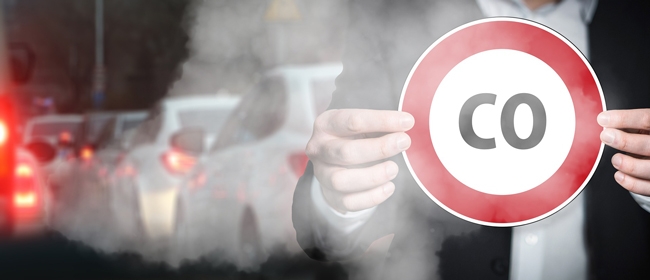In our daily lives, we encounter various risks, some of which are visible and easily recognizable, while others lurk in the shadows, posing a silent yet potent threat. One such danger is Carbon Monoxide (CO), a colorless, odorless, and tasteless gas that can be lethal in high concentrations. Due to its elusive nature, Carbon Monoxide has earned the ominous reputation of being a "silent killer." To combat this invisible menace, GasDog gas detectors specifically designed for Carbon Monoxide detection play a crucial role in safeguarding lives and property. This article delves into the reasons why a Carbon Monoxide (CO) gas detector is essential, exploring its significance in preventing the harmful effects of this toxic gas.
What is Carbon Monoxide (CO) Gas?
Carbon Monoxide is produced by the incomplete combustion of carbon-containing fuels, such as wood, gasoline, natural gas, and oil. Common sources include gas-powered appliances, furnaces, fireplaces, and vehicles. When these fuels do not burn completely, Carbon Monoxide is released into the air. The gas binds to hemoglobin in the bloodstream, reducing the blood's ability to carry oxygen, leading to potentially life-threatening consequences.
One of the primary reasons why Carbon Monoxide (CO), classified as a toxic gas, is particularly dangerous is its silent and stealthy nature. Unlike other gases that may have distinct odors or visible characteristics, Carbon Monoxide is virtually undetectable by our senses. It is odorless, tasteless, and colorless, making it impossible for humans to identify its presence without the assistance of specialized equipment. This characteristic poses a significant risk, as people may be exposed to high levels of Carbon Monoxide without any warning signs, leading to severe health implications.
The health effects of Carbon Monoxide exposure depend on the concentration and duration of exposure. At low levels, symptoms such as headaches, dizziness, nausea, and fatigue may occur. Prolonged exposure or higher concentrations can lead to more severe symptoms, including confusion, impaired coordination, and, ultimately, unconsciousness. In extreme cases, Carbon Monoxide poisoning can be fatal.
Certain groups are more susceptible to the adverse effects of Carbon Monoxide. Infants, elderly individuals, and those with pre-existing health conditions, such as cardiovascular or respiratory issues, are at a higher risk. Additionally, pregnant women and their unborn babies may face serious consequences if exposed to elevated levels of Carbon Monoxide. Protecting these vulnerable populations is a critical aspect of the importance of gas detectors for Carbon Monoxide. The ability of these detectors to swiftly identify the presence of this toxic gas is crucial in preventing potentially life-threatening situations and ensuring the safety of occupants in various settings.

Why Choose a Carbon Monoxide (CO) Gas Detector
Given the invisible threat posed by Carbon Monoxide, the need for reliable and efficient gas detectors becomes paramount. These detectors are designed to continuously monitor the air for the presence of Carbon Monoxide and provide timely alerts when concentrations reach dangerous levels. Several factors highlight the importance of gas detectors for Carbon Monoxide:
- Early Detection:
Carbon Monoxide gas detectors offer early detection capabilities, allowing individuals to be alerted to the presence of the gas before it reaches hazardous levels. This early warning system provides crucial time for people to evacuate the area, ventilate the space, or address the source of the Carbon Monoxide, preventing potential health issues and fatalities. - 24/7 Monitoring:
Gas detectors operate round the clock, providing continuous monitoring of the environment. This constant vigilance is essential because Carbon Monoxide leaks can occur at any time, even when people are asleep or away from their homes. The 24/7 monitoring ensures that potential dangers are identified promptly, regardless of the time of day or night. - Compliance with Regulations:
Gas detectors play a pivotal role in ensuring compliance with safety regulations and building codes. Many jurisdictions mandate the installation of Carbon Monoxide detectors in residential and commercial buildings to protect occupants from the harmful effects of this toxic gas. Compliance with these regulations is not only a legal requirement but also a responsible measure to enhance public safety. - Protection of Property:
In addition to safeguarding human lives, gas detectors for Carbon Monoxide also help protect property. Malfunctioning fuel-burning appliances or faulty ventilation systems can lead to the buildup of Carbon Monoxide, posing a risk of fire or damage to the structure. Early detection and intervention facilitated by gas detectors mitigate these risks, preserving both lives and property.
In the battle against the silent but deadly threat of Carbon Monoxide, Gas Dog portable handheld gas detectors and fixed single gas detectors emerge as indispensable allies. These devices serve as vigilant guardians, continuously monitoring the air for the presence of this toxic gas and providing early warnings to prevent potential harm. The importance of gas detectors for Carbon Monoxide cannot be overstated, as they not only protect lives but also contribute to the overall safety of buildings and communities. The portability of portable handheld gas detectors ensures that individuals can carry a proactive defense against Carbon Monoxide wherever they go, while fixed detectors offer continuous surveillance in specific locations. As technology advances, the development of more sophisticated and effective gas detection systems, including both portable and fixed solutions, will play a crucial role in minimizing the risks associated with Carbon Monoxide exposure. This technological evolution is instrumental in ultimately saving lives and promoting a healthier and safer living environment for all.
